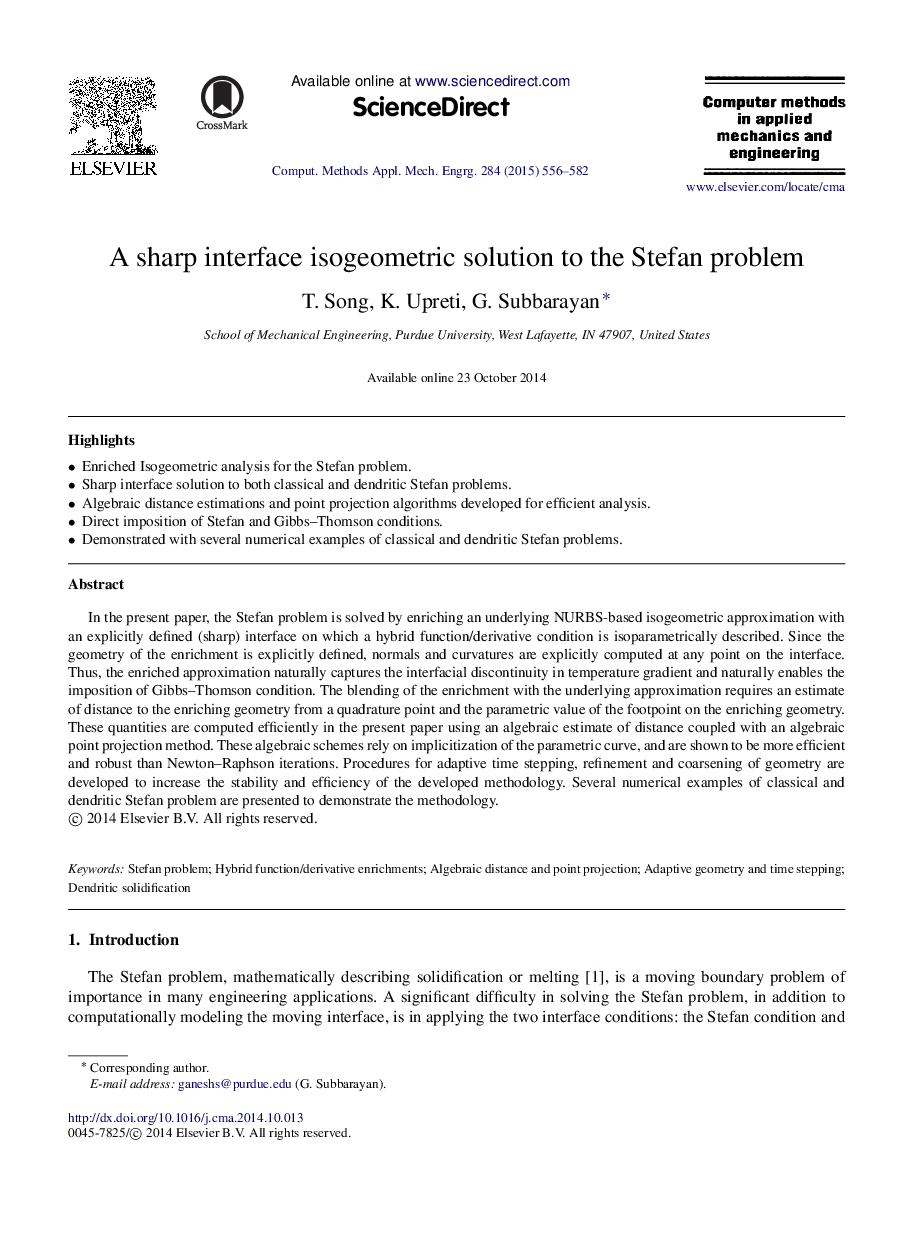| Article ID | Journal | Published Year | Pages | File Type |
|---|---|---|---|---|
| 497797 | Computer Methods in Applied Mechanics and Engineering | 2015 | 27 Pages |
•Enriched Isogeometric analysis for the Stefan problem.•Sharp interface solution to both classical and dendritic Stefan problems.•Algebraic distance estimations and point projection algorithms developed for efficient analysis.•Direct imposition of Stefan and Gibbs–Thomson conditions.•Demonstrated with several numerical examples of classical and dendritic Stefan problems.
In the present paper, the Stefan problem is solved by enriching an underlying NURBS-based isogeometric approximation with an explicitly defined (sharp) interface on which a hybrid function/derivative condition is isoparametrically described. Since the geometry of the enrichment is explicitly defined, normals and curvatures are explicitly computed at any point on the interface. Thus, the enriched approximation naturally captures the interfacial discontinuity in temperature gradient and naturally enables the imposition of Gibbs–Thomson condition. The blending of the enrichment with the underlying approximation requires an estimate of distance to the enriching geometry from a quadrature point and the parametric value of the footpoint on the enriching geometry. These quantities are computed efficiently in the present paper using an algebraic estimate of distance coupled with an algebraic point projection method. These algebraic schemes rely on implicitization of the parametric curve, and are shown to be more efficient and robust than Newton–Raphson iterations. Procedures for adaptive time stepping, refinement and coarsening of geometry are developed to increase the stability and efficiency of the developed methodology. Several numerical examples of classical and dendritic Stefan problem are presented to demonstrate the methodology.
